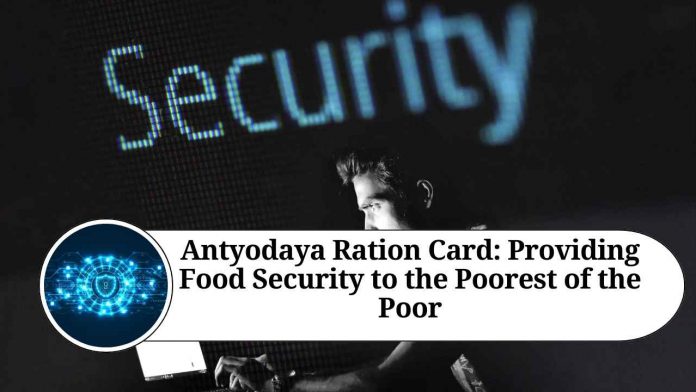The Antyodaya Anna Yojana (AAY) was launched by the Government of India in December 2000 to provide highly subsidized food grains to the poorest of the poor. Under this scheme, the government issues Antyodaya Ration Cards (AAY cards) to households that fall under the “Antyodaya” category, which includes destitute households, widows, homeless persons, and families headed by disabled persons or persons aged 60 years or more with no assured means of subsistence. In this blog, we will discuss the benefits of the Antyodaya Ration Card and how it is helping to provide food security to the poorest of the poor.
Benefits of Antyodaya Ration Card
- Highly subsidized food grains: The AAY scheme provides highly subsidized food grains to the Antyodaya households. Each household is entitled to 35 kg of food grains per month at a subsidized rate of Rs. 3 per kg for rice and Rs. 2 per kg for wheat. This ensures that the poorest of the poor have access to affordable food grains and are able to meet their basic food requirements.
- Priority in the Public Distribution System (PDS): The AAY households are given priority in the PDS, which is the main mechanism for distributing food grains to the poor in India. This ensures that they receive their entitlement of food grains on time and without any hassles.
- Reduction in malnutrition: The AAY scheme has been instrumental in reducing malnutrition among the poorest of the poor. By providing subsidized food grains, the scheme ensures that the Antyodaya households have access to a balanced diet and are able to meet their nutritional requirements.
- Empowerment of women: The AAY scheme has also been instrumental in empowering women in the Antyodaya households. The ration card is issued in the name of the female head of the household, which gives her the power to make decisions regarding the purchase and utilization of the food grains.
- Financial relief: The AAY scheme provides financial relief to the Antyodaya households, who are often struggling to make ends meet. By providing highly subsidized food grains, the scheme frees up a significant amount of their household budget, which can be used for other essential needs.
Conclusion
The Antyodaya Ration Card is an important initiative by the Government of India to provide food security to the poorest of the poor. By providing highly subsidized food grains, the scheme ensures that the Antyodaya households have access to affordable and nutritious food. The scheme has also been instrumental in reducing malnutrition among the poorest of the poor and empowering women in these households. With the help of the AAY scheme, the government is taking significant steps towards achieving its goal of eradicating hunger and poverty in India.
Other Related Blogs: Section 144B Income Tax Act
Frequently Asked Questions (FAQs)
Q: What is Antyodaya Ration Card?
A: Antyodaya Ration Card is a type of ration card issued by the government of India to households that fall under the “Antyodaya” category, which includes destitute households, widows, homeless persons, and families headed by disabled persons or persons aged 60 years or more with no assured means of subsistence. The purpose of this card is to provide highly subsidized food grains to the poorest of the poor.
Q: What are the benefits of having an Antyodaya Ration Card?
A: The benefits of having an Antyodaya Ration Card include highly subsidized food grains, priority in the Public Distribution System, reduction in malnutrition, empowerment of women, and financial relief. This card ensures that the poorest of the poor have access to affordable and nutritious food.
Q: How much food grains can be obtained with an Antyodaya Ration Card?
A: Each Antyodaya household is entitled to 35 kg of food grains per month at a subsidized rate of Rs. 3 per kg for rice and Rs. 2 per kg for wheat.
Q: Who is eligible for an Antyodaya Ration Card?
A: Antyodaya Ration Cards are issued to households that fall under the “Antyodaya” category, which includes destitute households, widows, homeless persons, and families headed by disabled persons or persons aged 60 years or more with no assured means of subsistence.
Q: How does an Antyodaya Ration Card help reduce malnutrition?
A: An Antyodaya Ration Card helps reduce malnutrition by providing highly subsidized food grains to the poorest of the poor. This ensures that the Antyodaya households have access to a balanced diet and are able to meet their nutritional requirements.
Q: How does an Antyodaya Ration Card empower women?
A: An Antyodaya Ration Card empowers women by issuing the card in the name of the female head of the household. This gives her the power to make decisions regarding the purchase and utilization of the food grains.
Q: How is an Antyodaya Ration Card different from other ration cards?
A: An Antyodaya Ration Card is different from other ration cards in that it is issued only to the poorest of the poor households that fall under the “Antyodaya” category. This card provides highly subsidized food grains to these households to ensure that they have access to affordable and nutritious food.




















